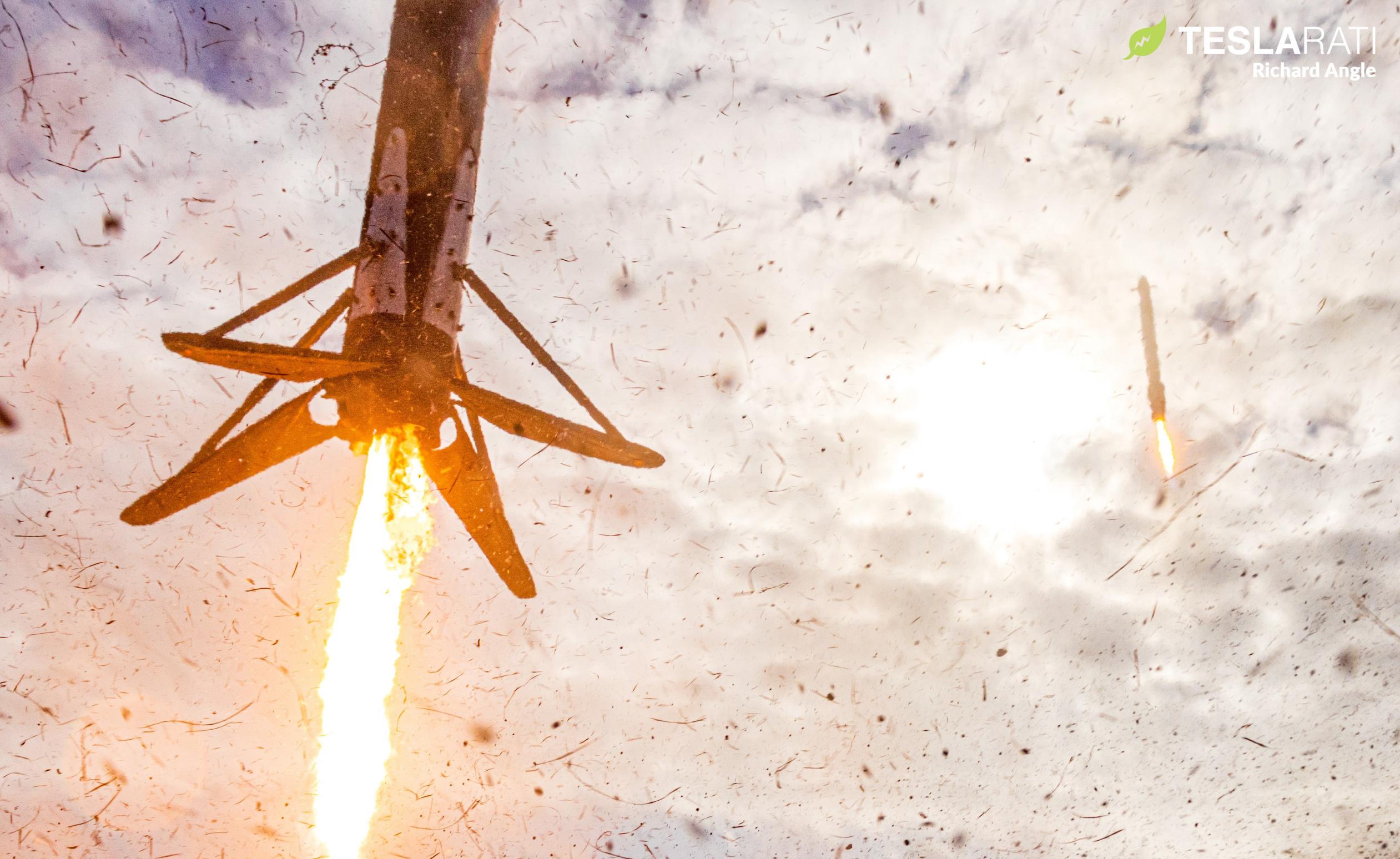

News
SpaceX’s Falcon Heavy rocket back in action after a three-year hiatus
Update: The US Space Systems Command says that SpaceX’s first direct launch to geosynchronous orbit was a “simply outstanding” success, safely deploying several satellites more than 36,000 kilometers (~22,400 mi) above the Earth’s surface.
The success of the US Space Force’s USSF-44 mission means that SpaceX’s Falcon Heavy rocket is now one of just a handful of operational rockets in the world that has demonstrated the ability to launch satellites directly to geosynchronous orbit. More importantly, it’s one of just three US rockets with that established capability. The other two rockets – ULA’s Atlas V and Delta IV – will cease to be available for US military missions by the end of 2023, meaning that Falcon Heavy may briefly become the only rocket in the world able to launch certain US military missions until ULA’s next-generation Vulcan rocket is ready to prove itself.
SpaceX’s Falcon Heavy has continued a streak of successful dual-booster landings during its first attempted launch directly to geosynchronous orbit, a mission that was also the rocket’s first launch in more than three years.
Known as USSF-44 and initially scheduled to launch more than two years ago, the US Space Force mission finally lifted off on November 1st, 2022 after relentless payload delays. By mid-2021, the hardware required for SpaceX’s first Falcon Heavy launch since June 2019 – mainly three new first-stage boosters – had finished qualification testing and been shipped to Florida in anticipation of a late-2021 or early-2022 launch. That launch never came.
Only in November 2022 did most or all of USSF-44’s payloads finally come together, resulting in a gap of more than 40 months between Falcon Heavy launches as practically every other payload assigned to the rocket in the interim experience their own significant delays. Regardless, on November 1st, Falcon Heavy lifted off for the fourth time and performed flawlessly for the nine minutes the US Space Force allowed SpaceX’s webcast to continue.
Over the course of those nine minutes, Falcon Heavy’s twin side boosters – both flying for the first time – helped send the rest of the rocket on its way to space before separating from the center core, upper stage, and payload to boost back towards the Florida coast. Less than eight minutes after liftoff, they safely touched down seconds apart at SpaceX’s LZ-1 and LZ-2 landing zones. Lacking grid fins or landing legs, Falcon Heavy’s intentionally-expendable center core (middle booster) continued burning for another 90 seconds and only separated from the upper stage after reaching a speed of almost four kilometers per second (8,900 mph) – a new record for a SpaceX rocket booster.
The center core, B1066, was likely obliterated when it reentered Earth’s atmosphere traveling at approximately 50% of orbital velocity. Side boosters B1064 and B1065, however, will be rapidly refurbished for a “future US Space Force mission” that SpaceX – perhaps incorrectly – says could follow USSF-44 as early as “later this year.” Unless SpaceX has received an additional USSF launch contract in secret, the company’s next USSF mission appears to be USSF-67, which the US Space Systems Command reported could launch as early as January 2023 in their latest press release [PDF]. USSF-44 and USSF-67 are technically set to launch in the same US fiscal year but not the same calendar year.
USSF-44 is SpaceX’s first direct geosynchronous launch, meaning that Falcon Heavy is attempting to deliver the US military’s payloads to a circular geosynchronous orbit (GEO) approximately 36,000 kilometers (~22,400 mi) above Earth’s surface. “Geosynchronous” refers to the fact that a spacecraft’s orbital velocity matches Earth’s rotational velocity at that altitude, making it a popular destination for communications and Earth observation satellites that want to observe the same region of Earth all the time. Ordinarily, to simplify the rocket’s job, most GEO-bound satellites are launched into an elliptical geosynchronous or geostationary transfer orbit (GTO) and use their own propulsion to circularize that ellipse.
On a direct-to-GEO launch, the rocket does almost all of the work. After reaching a parking orbit in Low Earth Orbit (LEO), Falcon Heavy’s upper stage likely completed a second burn to geosynchronous transfer orbit. Then, while conducting a complex ballet of thermal management and tank pressure maintenance to prevent all of its cryogenic liquid oxygen (LOx) from boiling into gas and its refined kerosene (RP-1) from freezing into an unusable slush, the upper stage must coast ‘uphill’ for around five or six hours.
Over that journey from an altitude of about 300 kilometers to 36,000 kilometers, in addition to the above tasks, the upper stage must also survive passes through both of Earth’s radiation belts. At apogee, Falcon S2 must reignite its Merlin Vacuum engine for around one or two minutes to reach a circular geosynchronous orbit. Payload deployment will follow and could last anywhere from a few minutes to an hour. Finally, to be a dutiful space tenant, Falcon’s upper stage must complete at least one or two more burns to reach its final destination: a graveyard orbit a few hundred kilometers above GEO.
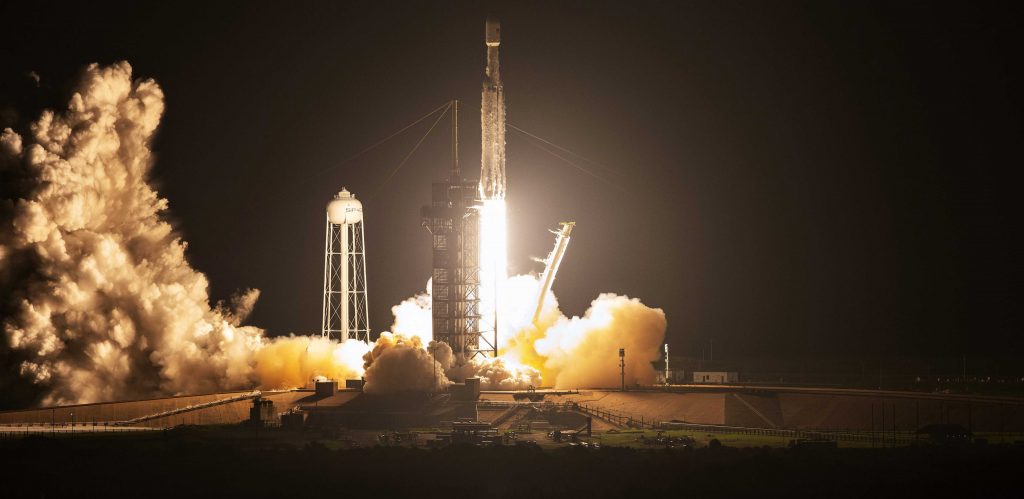
SpaceX’s third Falcon Heavy launch, a US Air Force mission called STP-2, was a partial dry-run of direct-to-GEO launch – albeit in low Earth orbit (LEO) instead of LEO, GTO, and GEO. During STP-2, Falcon Heavy’s upper stage completed four successful burns in three and a half hours. USSF-44 is significantly more challenging by most measures but not entirely outside of SpaceX’s range of experience. In addition to STP-2, Falcon 9 upper stages have conducted a few long-duration coast tests after completing unrelated primary missions.
In statements made to Spaceflight Now, the US Space Systems Command said that USSF-44’s two main payloads are a pair of propulsive kick stages and payload platforms, one – LDPE-2 – supplied by Northrop Grumman and the other – the “Shepherd Demonstration” – a mystery. LDPE-2 will reportedly carry three hosted payloads and deploy three rideshare satellites: likely two Lockheed Martin LINUSS-A cubesats and Millenium Space Systems’ TETRA-1. All three rideshare satellites are designed to demonstrate various new technologies, ranging from propulsion systems to avionics.
Rewatch SpaceX’s USSF-44 Falcon Heavy launch here.
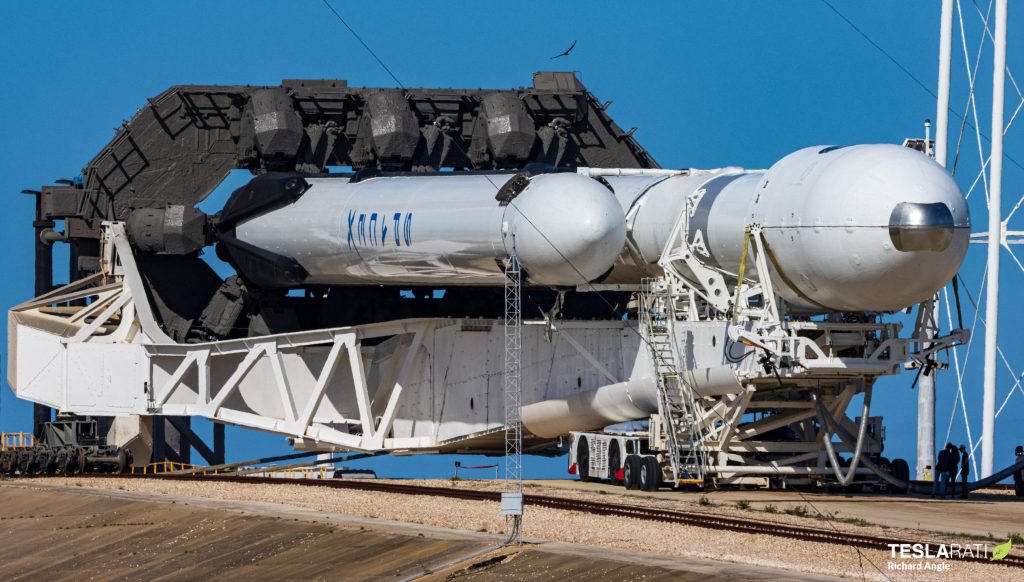
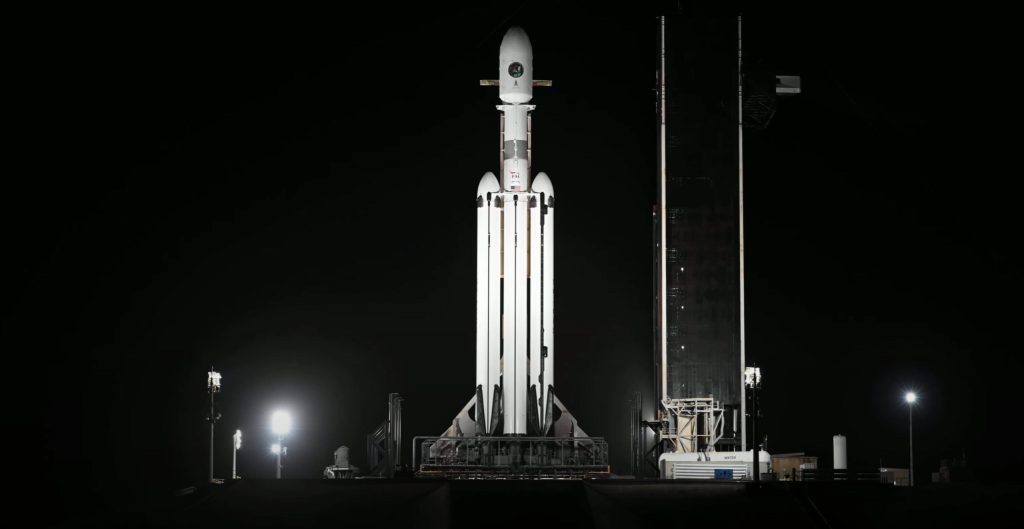
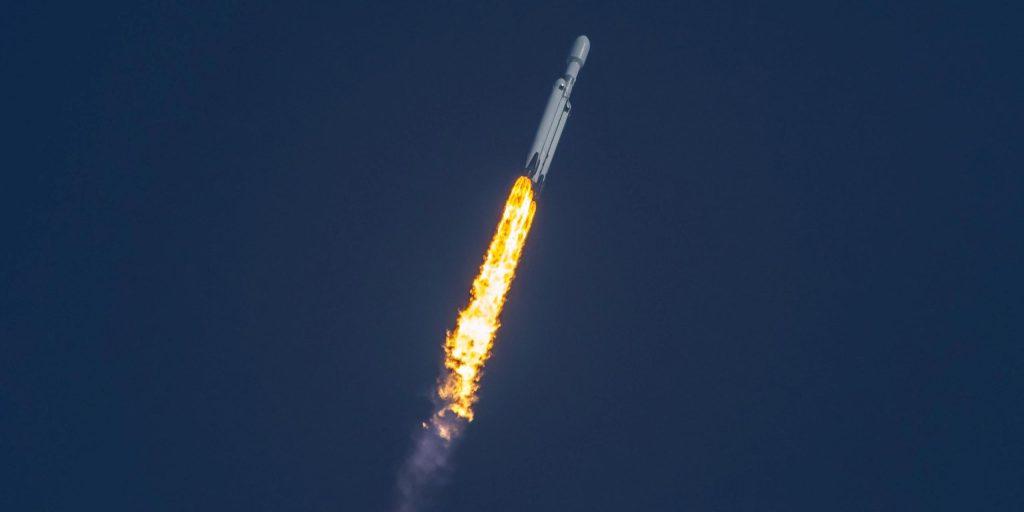
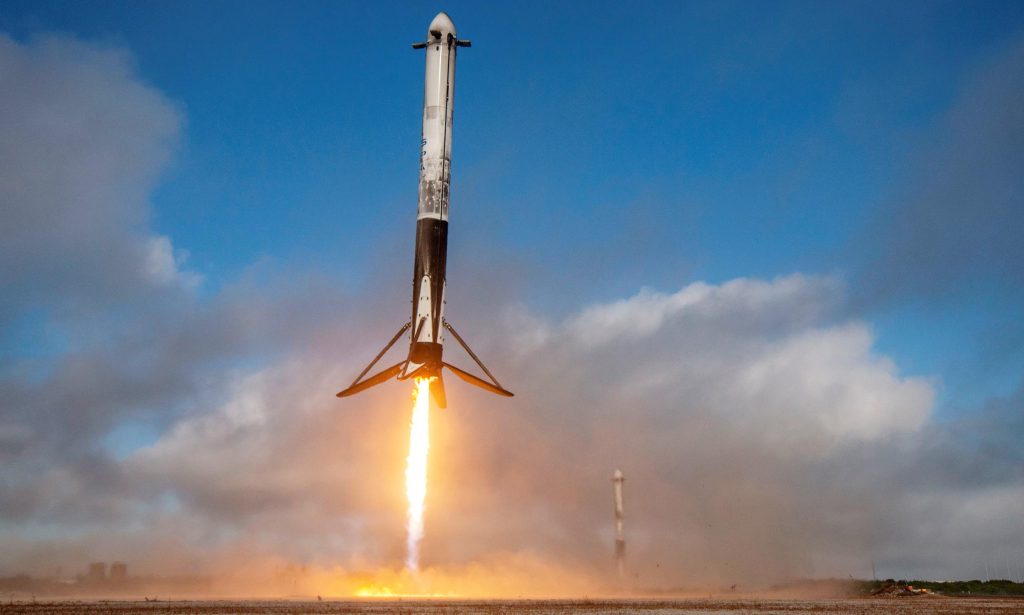
News
Tesla Robotaxi has already surpassed Waymo in this key metric
Tesla Robotaxi has already overtaken Waymo in Austin in one key metric, but there’s still more work to do.

Tesla Robotaxi has already surpassed Waymo in one extremely important key metric: size of service area.
Tesla just expanded its service area in Austin on Monday morning, pushing the boundaries of its Robotaxi fleet in an interesting fashion with new capabilities to the north. Yes, we know what it looks like:
🚨 Tesla’s new Robotaxi geofence is…
Finish the sentence 🥸 pic.twitter.com/3bjhMqsRm5
— TESLARATI (@Teslarati) July 14, 2025
The expansion doubled Tesla Robotaxi’s potential travel locations, which now include the University of Texas at Austin, a school with over 53,000 students.
The doubling of the service area by Tesla has already made its travel area larger than Waymo’s, which launched driverless rides in October 2024. It became available to the public in March 2025.
According to Grok, the AI agent on X, Tesla Robotaxi’s current service area spans 42 square miles, which is five square miles larger than Waymo’s service area of 37 square miles.
Tesla Robotaxi (red) vs. Waymo geofence in Austin.
Much can be said about the shape… but the Robotaxi area is now ~3.9 mi² (10 km²) larger than Waymo’s!! pic.twitter.com/dVfh2ODxJC
— Robin (@xdNiBoR) July 14, 2025
The service area is one of the most important metrics in determining how much progress a self-driving ride-hailing service is making. Safety is the priority of any company operating a ride-hailing network, especially ones that are making it a point to use autonomy to deploy it.
However, these companies are essentially racing for a larger piece of the city or cities they are in. Waymo has expanded to several different regions around the United States, including Arizona and Los Angeles.
Tesla is attempting to do the same in the coming months as it has already filed paperwork in both California and Arizona to deploy its Robotaxi fleet in states across the U.S.
As the platform continues to show more prowess and accuracy in its operation, Tesla will begin to expand to new areas, eventually aiming for a global rollout of its self-driving service.
News
Tesla Megapacks arrive for massive battery replacing coal plant
Tesla Megapacks have started arriving on-site to the Stanwell Battery Project, just as Queensland prepares to wind down the Stanwell coal plant.

The first of over 300 Tesla Megapacks have arrived to the site of a massive battery energy storage system (BESS) being built in Australia, dubbed the Stanwell Battery Project after a coal plant it’s set to replace.
In a press release last week, the Stanwell Battery Project announced that the first Tesla Megapack 2XL units had arrived to the site, which is located outside of Rockhampton in Queensland, Australia. The project will eventually feature 324 Megapack units, set to arrive in the coming months, in order to support the 300MW/1,200MWh battery project.
“The Stanwell Battery is part of the diversification of our portfolio, to include cleaner and more flexible energy solutions,” said Angie Zahra, Stanwell Central Generation General Manager. “It is just one part of the 800 MW of battery energy storage capacity we have in our pipeline.
“Capable of discharging 300 MW of energy for up to four hours (1,200 MWh), our mega battery will be one of the largest in Queensland.”

Credit: Stanwell
Did you know Tesla’s Lathrop facility churns out a Megapack every 68 minutes? That’s enough energy to power 3,600 homes for an hour per unit! ⚡️ pic.twitter.com/bG6fpHkB9O
— TESLARATI (@Teslarati) June 11, 2025
READ MORE ON TESLA MEGAPACKS: Tesla Lathrop Megafactory celebrates massive Megapack battery milestone
The state is working with government-owned company Yurika to facilitate construction, and the process is expected to create roughly 80 jobs. The project is expected to come fully online in May 2027, with initial commissioning of the Megapacks aiming for November 2025.
The Stanwell Battery is set to replace the nearby Stanwell coal generation plant, which the government is planning to wind down starting in 2026 as part of efforts to reach an 80 percent renewable energy generation ratio by 2035. Meanwhile, the government is also set to begin winding down the Tarong and Callide coal plants, while several other Megapack projects are being built or coming online. o ya
Tesla currently has two Megapack production facilities, located in Lathrop, California, in the U.S. and another that came online earlier this year in Shanghai, China. The Shanghai Megafactory shipped its first units to Australia in March, while both factories are expected to be capable of producing 10,000 Megapack units per year upon reaching volume production.
News
The Tesla Diner is basically finished—here’s what it looks like
The company first broke ground on the Diner, Drive-in, and Supercharger location in September 2023. Now, it has served one of its first internal customers.

Tesla has finally completed the construction of its highly anticipated Diner, Drive-in, and Supercharger in Los Angeles, and recent photos of the interior’s “retro-futuristic” style are making their way around the internet.
X user Brad Goldberg shared photos from the Tesla Diner site last Tuesday, depicting some of the Supercharger stalls, indoor and outdoor seating areas, multiple neon lights, and even an Optimus robot. Goldberg also noted that there had been a “flurry of activity on site” while he was snapping the photos last week, suggesting that the restaurant location could be getting close to opening.
The Tesla Diner also served one of its first internal customers in the past few days, as Elon Musk posted on X on early Monday morning that he had just finished up eating a meal at the site:
I just had dinner at the retro-futuristic Tesla diner and Supercharger.
Team did great work making it one of the coolest spots in LA!
The photos also show that the site is pretty much done, with some of them even showing vehicles charging at the charging stalls.
You can see some of the latest photos of the Tesla Diner below.

Credit: BradGoldbergMD | X

Credit: BradGoldbergMD | X

Credit: BradGoldbergMD | X

Credit: BradGoldbergMD | X

Credit: TeslaKing420 | X

Credit: TeslaKing420 | X

Credit: Brad Goldberg (via Sawyer Merritt on X)

Credit: Brad Goldberg (via Sawyer Merritt on X)

Credit: Brad Goldberg (via Sawyer Merritt on X)

Credit: Brad Goldberg (via Sawyer Merritt on X)

Credit: Brad Goldberg (via Sawyer Merritt on X)
READ MORE ON TESLA’S LA DINER: Tesla readies Drive-In Diner Supercharger for launch with app inclusion
When will the Tesla Diner open to external customers?
While it’s still not open to external customers yet, the news again suggests that the company could be close to an official opening date. Tesla first broke ground on the Diner in September 2023, after receiving a wave of building permit approvals throughout that year. Teslarati also covered much of the construction progress throughout last year, including when crews installed the first and second drive-in screens.
Located at 7001 West Santa Monica Boulevard, the idea was first discussed in 2018 by Musk and a few others on Twitter, featuring 1950s rock and roll, waiters on roller skates, and drive-in movie theater screens playing clips from some of history’s best movies. Notably, the photos of the front doors also show that the site will be open 24 hours a day, 7 days a week, whenever it does end up opening.
Tesla’s progress on Supercharger with diner, drive-in seen in aerial footage
-

 Elon Musk2 weeks ago
Elon Musk2 weeks agoTesla investors will be shocked by Jim Cramer’s latest assessment
-

 News2 days ago
News2 days agoTesla debuts hands-free Grok AI with update 2025.26: What you need to know
-

 Elon Musk4 days ago
Elon Musk4 days agoxAI launches Grok 4 with new $300/month SuperGrok Heavy subscription
-

 Elon Musk7 days ago
Elon Musk7 days agoElon Musk confirms Grok 4 launch on July 9 with livestream event
-

 News1 week ago
News1 week agoTesla Model 3 ranks as the safest new car in Europe for 2025, per Euro NCAP tests
-

 Elon Musk2 weeks ago
Elon Musk2 weeks agoxAI’s Memphis data center receives air permit despite community criticism
-

 News4 days ago
News4 days agoTesla begins Robotaxi certification push in Arizona: report
-

 Elon Musk2 weeks ago
Elon Musk2 weeks agoTesla scrambles after Musk sidekick exit, CEO takes over sales

















